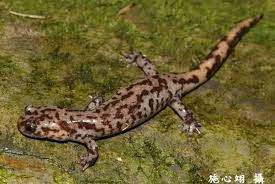
|
|
Description of AmphibianThe hill stream loach is an amphibious creature unique to Asia. They prefer to inhabit humid environments such as stream banks, forest floors, high mountain grasslands, and other areas. Currently, they are primarily found in regions like Siberia, Northeast China, Japan, Korea, and Taiwan. The Guanwu Hill Stream Loach and the Chunan Hill Stream Loach are two unique species found in Taiwan, and their distribution is closely related to mountain ranges. The Chunan Hill Stream Loach is found in the Central Mountain Range (there are records in the Hehuan Mountain and Chilai Mountain ranges), at elevations between 2600 and 3100 meters. Meanwhile, the Guanwu Hill Stream Loach is found in the Snow Mountain Range (there are records in the Guanwu area of the Hsinchu Forest District and near the northern Chashan of the Snow Mountain Range), at elevations between 1300 and 1720 meters, making it the lowest-altitude among all Taiwan's unique hill stream loaches. In recent years, due to the impact of climate change, heavy rains and typhoons have become more common, coupled with human-induced destruction, the living space for hill stream loaches has been steadily decreasing… |
About Hynobius FucusApproximately eight centimeters long, Hynobius fucus are aquatic creatures. There are During the breeding season, the white spots will be more apparent. The front limb and the rear limb both have four toes. There is a smaller tail and shorter body than in other Taiwanese salamanders, and the body and limb proportions are shorter and fatter. A well-developed gland on the surface of the body secretes white mucus when disturbed. Hynobius fucus is nocturnal and usually resides under rocks, on rotten wood, and in the soil during the day. Small invertebrates like earthworms provide it with its main food source. In Taiwan's five kinds of salamanders, it is the one with the lowest altitude limit, but it is also the most recent discovery. The species is mostly found in mountainous areas between 1,300 and 1,720 meters above sea level in the middle part of the Xue Mountain ranges. A medium to low altitude primary forest at the bottom layer of a humid place or near a stream is the preferred habitat of this species. Geographically isolated mountainous areas in Taiwan prevent salamanders from exchanging genetic material, causing crises such as inbreeding depression in some salamander populations. A variety of hazards, such as global warming, habitat pollution, human interference, and climate change, may pose a threat to some ethnic groups today, affecting their survival. A warming climate is not easily adapted to by Hynobius fucus due to its poor temperature adaptation abilities, leading to a declination of population. |
|

Hynobius Sonani, the Taichu salamander, is a unique amphibian endemic to Taiwan. These salamanders inhabit Taiwan's Central Mountain Range at elevations surpassing 2,750 meters. They thrive in various environments, from alpine landscapes to lush, moisture-rich evergreen forests where they breed in streams.
Adult Hynobius sonani exhibit sexual dimorphism, with males measuring 98-129 millimeters and females 90-105 millimeters in length. They boast distinctive features like 12-13 costal grooves continuing onto their bellies, V-liked shaped vomeropalatine teeth, round mouths, and large, sensory-enhancing eyes. Notably, these salamanders have sizable, flat parotoid glands and cylindrical tails, slightly shorter than their bodies. The fifth toe frequently degenerates.

Their striking coloration features dark brown, lichen-like marbled patterns against a lighter brown base, with shades ranging from yellowish to pinkish brown.
Geographically, their habitat is fragmented, primarily concentrated in specific areas of Taiwan, including Taroko National Park's southwest, the Hehuanshan region, and Yushan National Park's central zone. They are commonly found at altitudes between 2,750 to 3,600 meters, inhabiting coniferous forest streams and high-altitude meadows, encompassing around 1,249 square kilometers.
Due to its strict habitat requirements regarding temperature and humidity, Hynobius sonani was classified as an Endangered species. Consequently, the conservation of this unique salamander is paramount. Stringent protection measures are in place within Taroko National Park to secure its habitat and ensure its survival. The primary threat is habitat loss, driven primarily by tourism-related infrastructure development. Balancing the preservation of this unique species with the demands of eco-tourism underscores the urgent need for sustainable practices and conservation initiatives in the region.